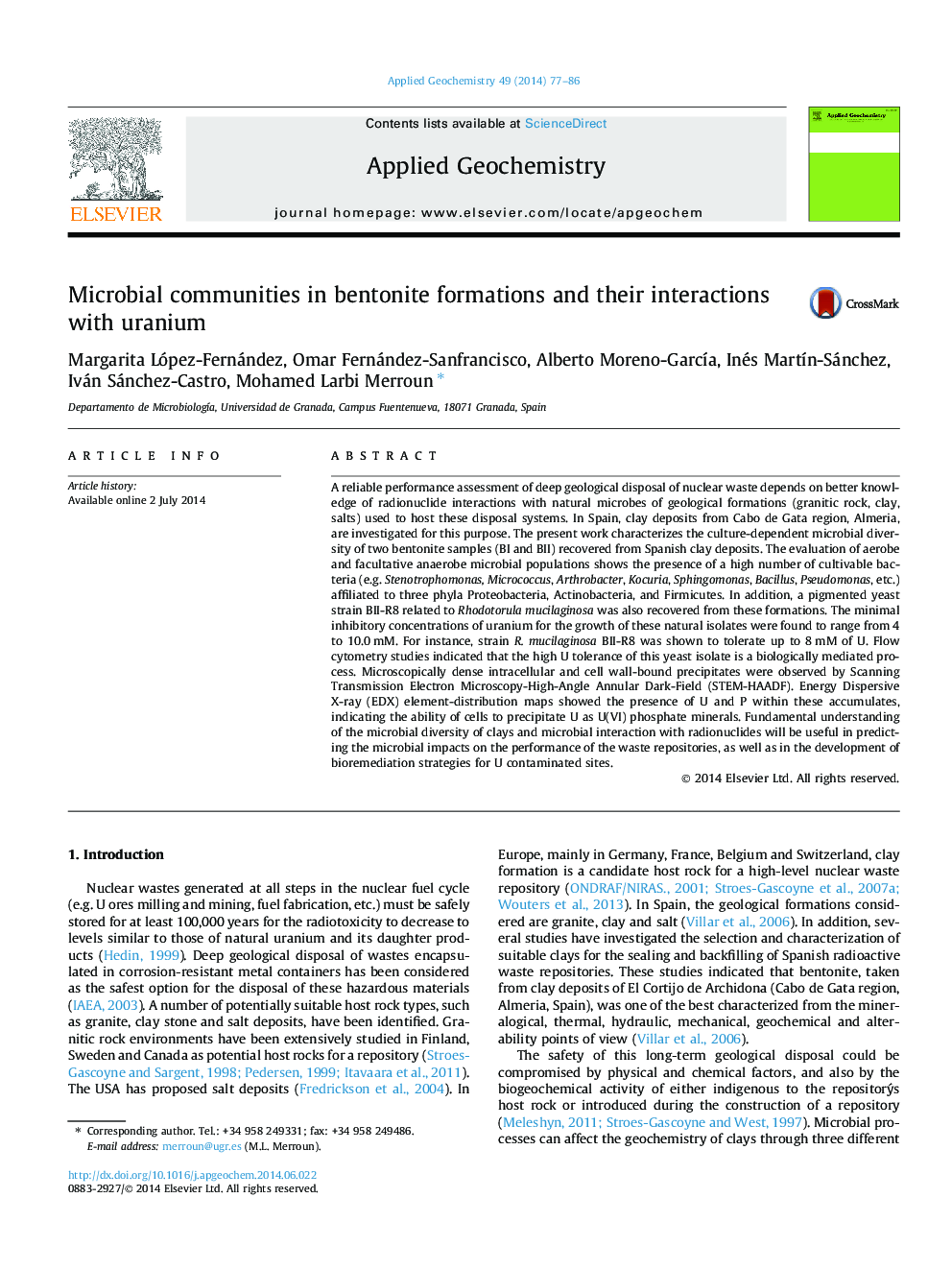| کد مقاله | کد نشریه | سال انتشار | مقاله انگلیسی | نسخه تمام متن |
|---|---|---|---|---|
| 4435763 | 1620242 | 2014 | 10 صفحه PDF | دانلود رایگان |
• Microbial diversity of Spanish bentonites was studied.
• High number of aerobe and facultative anaerobe microbes were isolated from bentonites.
• Natural bentonite microbes are able to tolerate high U concentrations.
• U is immobilized by the cells of the strain Rhodotorula mucilaginosa BII-R8 as U(VI) phosphates.
A reliable performance assessment of deep geological disposal of nuclear waste depends on better knowledge of radionuclide interactions with natural microbes of geological formations (granitic rock, clay, salts) used to host these disposal systems. In Spain, clay deposits from Cabo de Gata region, Almeria, are investigated for this purpose. The present work characterizes the culture-dependent microbial diversity of two bentonite samples (BI and BII) recovered from Spanish clay deposits. The evaluation of aerobe and facultative anaerobe microbial populations shows the presence of a high number of cultivable bacteria (e.g. Stenotrophomonas, Micrococcus, Arthrobacter, Kocuria, Sphingomonas, Bacillus, Pseudomonas, etc.) affiliated to three phyla Proteobacteria, Actinobacteria, and Firmicutes. In addition, a pigmented yeast strain BII-R8 related to Rhodotorula mucilaginosa was also recovered from these formations. The minimal inhibitory concentrations of uranium for the growth of these natural isolates were found to range from 4 to 10.0 mM. For instance, strain R. mucilaginosa BII-R8 was shown to tolerate up to 8 mM of U. Flow cytometry studies indicated that the high U tolerance of this yeast isolate is a biologically mediated process. Microscopically dense intracellular and cell wall-bound precipitates were observed by Scanning Transmission Electron Microscopy-High-Angle Annular Dark-Field (STEM-HAADF). Energy Dispersive X-ray (EDX) element-distribution maps showed the presence of U and P within these accumulates, indicating the ability of cells to precipitate U as U(VI) phosphate minerals. Fundamental understanding of the microbial diversity of clays and microbial interaction with radionuclides will be useful in predicting the microbial impacts on the performance of the waste repositories, as well as in the development of bioremediation strategies for U contaminated sites.
Journal: Applied Geochemistry - Volume 49, October 2014, Pages 77–86
